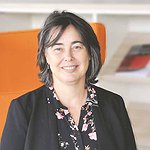Muslims as Heretics in Spanish Medieval Sources

When the Iberian Peninsula became part of the Umayyad Caliphate in the 8th century, the response to Islam by Byzantine theologians had been already well established. The idea of Islam being part of the number of heresies existing within the Christian Church was spread from the writings of Saint John Damascene, and found its way in the exchange of ideas between the East and West of the Mediterranean basin. It shows an effort to understand the new religious phenomenon invoking already known religious experiences and facts.
This project focuses on the reception of Islam and the explanation of the religious encounter with a new faith in the Iberian Peninsula from the earliest times of the Muslim conquest to the 11th century. By this time, conversion to Islam had reached its peak, but the Christian community under Muslim rule (called Arabized Christians or Mozarabs) was still extant and underwent a re-organization, while it produced a number of manuscripts showing their acculturation. Still then, the subject of heresies was widely discussed. It is our purpose to see if Islam was considered one of them, and whether Mozarabs were more worried about religious contamination by Islamic doctrines and rituals or by the arrival in the Iberian Peninsula of heretic Christians from the East.
Discussions among the Western European Church as represented by Rome, the Byzantine Church, and the Churches under Muslim domination had an impact in the Iberian Church, which shared theological and practical interests with all of them. Therefore, the current theological debates on heresy in the three areas must have some kind of reflection in Iberian treatises.
Finally, it will be interesting to approach the first answers to the questions posed by Islam -referring to spaces of cult, ritual, and doctrinal responses in the way of polemic and apologetic literature- in the first two centuries of Muslim power in the Iberian Peninsula, when the corpus of Islamic law and theology was still being defined.
Beteiligte Personen


